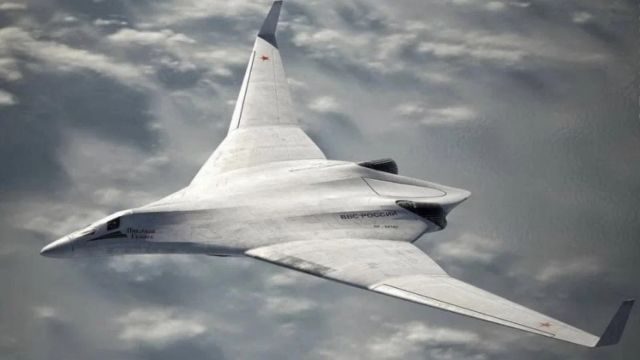Russia Constructs Special Base for Testing Its Latest Stealth Bomber “PAK DA”
The announcement from Russia about the commencement of construction for the PAK DA facility follows the inaugural flight of the latest United States stealth bomber, the "B-21 Raider," on November 10
(DEFENCE SECURITY ASIA) — Russia has reportedly initiated construction work on a specialized facility for the development and testing of a new strategic bomber aircraft called “PAK DA” or “Izdelie 80” (Product 80), developed by the Tupolev company.
PAK DA, Russia’s first stealth bomber, is expected to make its maiden flight in 2025. Tupolev operates under the United Aircraft Corporation (UAC).
The announcement from Russia about the commencement of construction for the PAK DA facility follows the inaugural flight of the latest United States stealth bomber, the “B-21 Raider,” on November 10.
International defense observers predict that China’s newest stealth bomber, the “H-20,” will conduct its maiden flight within the next 24 months.
Russia’s weapons manufacturing agency, ROSTEC, recently stated through the RIA-Novosti news agency that its experts have completed research and development work to establish a testing base for the next-generation bomber, PAK DA.

A company under ROSTEC is tasked with designing and constructing the testing complex for the strategic bomber PAK DA. “Russia’s stealth bomber, PAK DA, is expected to commence operations in 2027.”
The PAK DA strategic stealth bomber is a subsonic aircraft with a speed not exceeding Mach 1.0, in contrast to the commonly heard slogan “faster is better.”
Tupolev’s focus in the PAK DA bomber development program is on the stealth features in the aircraft’s design.
The designers of the PAK DA bomber aim to draw inspiration from the B-2 Spirit, a strategic bomber from the United States known for its emphasis on stealth features rather than high speed.
Critics argue that Russia is attempting to “emulate” the design of the U.S. bomber, particularly in the “flying wing” configuration.

The “flying wing” design dispenses with traditional aircraft structures such as fuselage, wings, and various elements like stabilization components and flight control.
Instead, these traditional elements are replaced by complex flight control computers.
While the PAK DA development program is shrouded in mystery, it can be confirmed that the aircraft is redesigned to carry conventional, nuclear, and hypersonic weaponry.
Overall, the PAK DA bomber is said to be capable of carrying up to 30 tons of guided bombs and missiles, compared to the 20 tons of the U.S. B-2 Spirit bomber.
A few months ago, British Minister for the Armed Forces James Heappey stated that Russia’s newest bomber possesses stealth characteristics.
“Russia maintains several types of bombers on standby at various air bases throughout its territory. The PAK-DA prototype, with a design resembling the U.S. B-2 bomber, may be nearing completion,” he said.

Currently, Russia operates several bombers such as the Tu-95, Tu-22, and Tu-160, and with the introduction of PAK-DA (Izdelie 80), the latest strategic bomber from Russia is expected to replace some aging strategic bombers.
“PAK-DA or Izdelie 80 will be Russia’s truly stealth strategic bomber,” according to Russian media.
Due to its stealth characteristics, the newest Russian bomber has the capability to infiltrate the airspace of a country undetected by radar and release its payload before returning to its base.
All of this goes undetected by radar due to its low Radar Cross Section (RCS) design, coupled with the coating of special radar-absorbing materials. According to Russian media, despite its subsonic speed, the latest Russian bomber can operate over a range of up to 15,000 km. — DSA

DEFENCE SECURITY ASIA APPS
To advertise contact: lulwabyadah@gmail.com


Comments are closed.